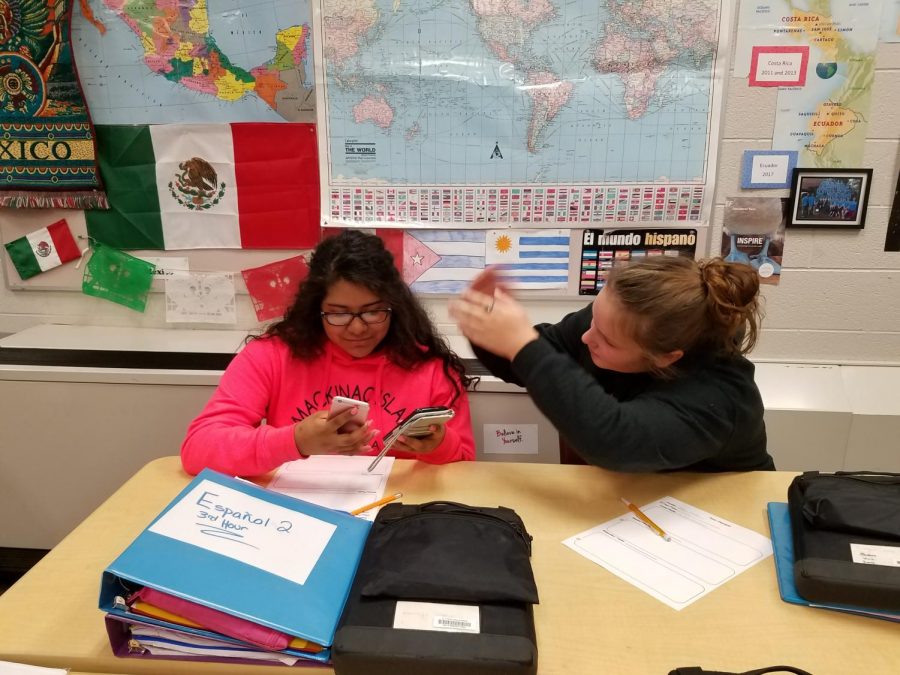Technology: a new zone of isolation?
Valentina Memije (left) is too distracted by her phones to see her classmate asking for help.
October 9, 2018
As the amount of technology increases in our daily lives, the amount of face-to-face interaction a person receives over a days time is on a steady down fall with no signs of resurfacing.
According to Mr. Puffpaff, “Students and parents, nowadays, are so distracted by technology that they usually don’t pay attention to each other. We all are guilty of doing this at some point.”
Even though the purpose of the technology is to connect us, many of us are drifting apart. As a whole, people pay more attention to the devices they carry in their pockets then they do to the world around them. They may be looking at or even talking to the people who they care about. If they could raise their head three inches higher, they could actually have a real conversation versus a digital one.
“ We need to change, before we completely isolate ourselves,” Puffpaff added.
According to the American Journal of Preventive Medicine, “Being on social media for two hours or more a day makes you twice as likely to feel socially isolated.”
Social media was created as a way to connect people from every place and background to interact with thousands of people they never would have met otherwise. The recurring problem is, that this access can give us the sense that this makes up for the lack of real-world-contact we have. This statement is NOT true.
The University of Glasgow, which is located in Scotland, conducted an experiment in 2015 on the effects of social media on teenagers. Their results were, time on social media are linked with lower self-esteem and higher levels of anxiety and depression. This adds to the main idea of technology depleting the uses of real-world-connections.
I believe that human interaction is being depleted by the sudden rise in technology people have in their daily lives. I think a shift will have to happen soon before face-to-face interaction is completely obsolete.


